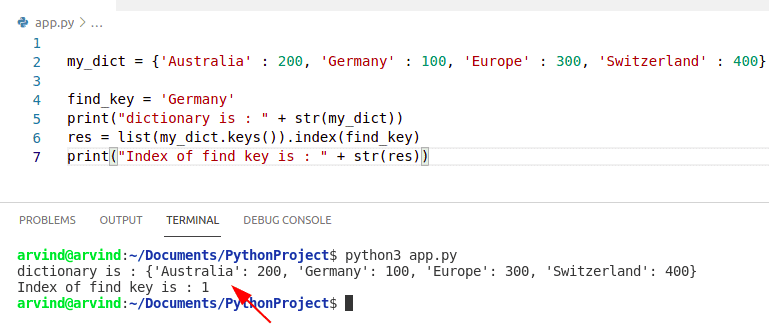

Sort the items of the list in place (the arguments can be used for sortĬustomization, see sorted() for their explanation). Return the number of times x appears in the list.
CREATE DICT FROM LIST PYTHON FULL
The returned index is computed relative to the beginning of the full Notation and are used to limit the search to a particular subsequence of The optional arguments start and end are interpreted as in the slice Raises a ValueError if there is no such item. Return zero-based index in the list of the first item whose value is equal to x. Will see this notation frequently in the Python Library Reference.) list. Is optional, not that you should type square brackets at that position. Square brackets around the i in the method signature denote that the parameter Is specified, a.pop() removes and returns the last item in the list. Remove the item at the given position in the list, and return it. Remove the first item from the list whose value is equal to x.

The list, and a.insert(len(a), x) is equivalent to a.append(x). The first argument is the index of theĮlement before which to insert, so a.insert(0, x) inserts at the front of extend ( iterable )Įxtend the list by appending all the items from the iterable. Here are all of the methods of listĪdd an item to the end of the list. The list data type has some more methods. This adds a key:value pair to the result dictionary.įinally, outside the while loop, we return the value of result on line 16.This chapter describes some things you’ve learned about already in more detail,Īnd adds some new things as well. This gives us a map object that can be converted to a list using the list() function.Īfter converting, we get the list, which we assign to result. The map() function then applies the int() function to all the elements in this list to convert them to integers. Suppose marks.split(',') returns the list. In our suggested solution above, we use the map() function to apply the int() function to all the elements in marks.split(','). The map() function is a built-in function in Python that applies a function to all the elements of an iterable (such as a list). Next, we pass this list and the int() function to another function called map(). Suppose marks = '1, 2, 3, 4', the split() method splits the string into the list.

CREATE DICT FROM LIST PYTHON CODE
In our code above, we pass ',' as the delimiter. This method splits a string into a list, using the argument as a delimiter.

Next, on line 14, we do a number of things.įirst, we use marks to call the split() method for strings. If the user enters -1, we use the break statement on line 10 to exit the while loop.Įlse, we proceed to line 12 where we prompt users to enter the class marks, and assign the input (which is a string) to a variable called marks. On line 7, we prompt users to enter the class name or -1 to quit. Next, we use a while True loop to repeatedly prompt users for input. Inside the function, we declare an empty dictionary called result. In the suggested solution above, we first define a function called getMarks() on line 1. Result = list(map(int, marks.split(','))) Marks = input('Enter Marks, Separated by Commas: ') A Python dictionary of lists refers to a dictionary that consists of lists as values.įor instance, if dict1 = ĬlassName = input('Enter Class Name or -1 to Quit: ')


 0 kommentar(er)
0 kommentar(er)
